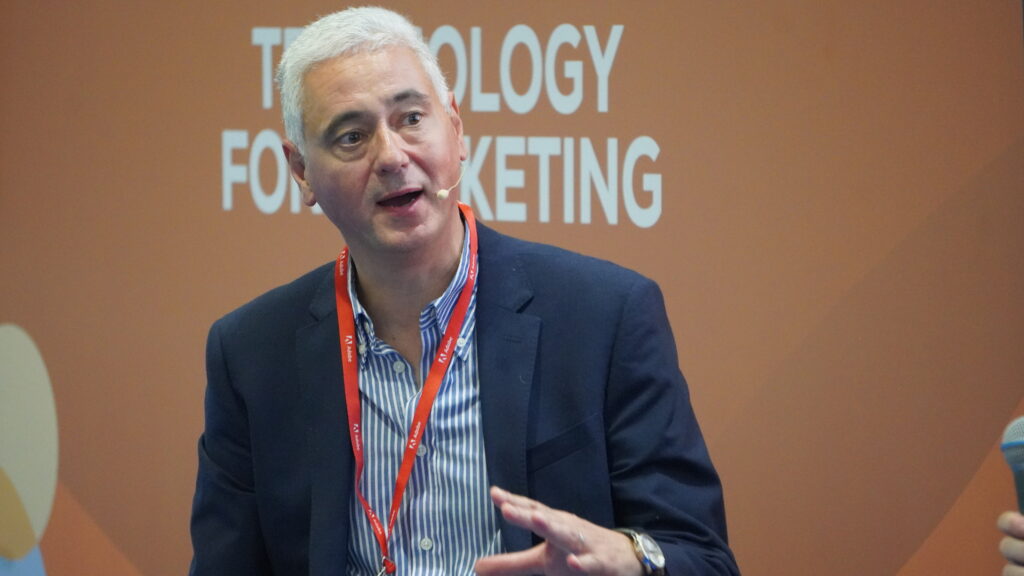
It wasn’t so long ago that D2C brands or ‘digitally native’ brands basked in a perceived golden age with a strategy of building brand loyalty and revenue via personalised, emotionally-driven storytelling and a focus on community-building.
But the landscape has become tougher for the pure play D2C. Many poured resources into marketing and acquisition in a bid to scale and subsequently burnt through their cash reserves. At the same time consumers have become more promiscuous in their shopping behaviours. However, some brands are still thriving by adapting their models to new circumstances, with examples including Gymshark and Pura.
Our Group Director of Content Branwell Johnson recently gathered a panel of experts to discuss how brands are evolving D2C marketing fundamentals. The session took place at Technology for Marketing, the event co-located with Ecommerce Expo and the panel featured:
- Natasha Dabell – CRM Manager at Percival Menswear
- Claire Ferreiria – Founder & CMO at Mums in Marketing
- Tom McGirr – Executive Strategy Director for The Wild, powered by Jungle Creations
- Nora Zukauskaite – Global Marketing Director at Ciate London, Lottie London and Skin Proud
While D2C fundamentally describes a sales channel, all agreed it’s shorthand for a certain business model. And although the lines between D2C and traditional brand models are starting to blur, achieving differentiation and building awareness remains a difficult hurdle for D2C brands.
Natasha Dabell and Nora Zukauskaite explained their current business operations. Natasha said that most of Percival’s businesses primarily comes from ecommerce, although it does have a physical retail presence and works with wholesale partners. “Although we may compete with them online, it’s important exposure for us. We want to sit alongside like-minded brands to speak to like-minded customers at the right price.”
Nora explained that Brand Agency London, the parent company for the cosmetics brands, has the mindset of “a retail-first brand”. The brands are stocked by the likes of Walmart and CVS but as the target audience is Gen Z they are also “digital-first brands” driven by discovery through TikTok and other social channels. “Whilst our ecommerce distribution accounts for 10%, we’re planning to grow this to 20% in the coming years.”
Comms means community
The original D2C model was based on providing a premium customer experience but the need for a fast return on marketing investment and the rising cost-per-acquisition can distract from and from building a strong emotional connection.
Claire Ferreria explained: “The physical retailer has traditionally created and set the scene. D2C brands shoulder that responsibility when you lose that retail experience and by building your community, you’re fostering an emotional connection – it’s more about the solo experience.”
Nora offered advice on how to navigate this shift in mindset. “What we’re trying to do for our D2C channels is not just push the communications – it’s what the brand is about. Are we launching any environmentally-friendly activities? Are we talking about packaging in an interesting way? That’s how you build brand understanding beyond the product.”
Natasha agreed that the communal spirit should drive D2C strategies. “I am a number one advocate for a community. But if you strip it back to its bare bones, everyone’s expectations of what they would expect from start to finish is pretty much the same. Customer expectations are growing – and there’s a lot riding on providing a community and a great service. It’s hard but we need to be aware of it.”
Tom McGirr suggested that some brands try to launch a D2C offer too quickly and rapidly kill the customer experience. “Brands should use other long-standing, well-oiled channels that already exist and then grow into their own D2C offer when they can deliver customer experiences that are all about the brand.”
The building blocks of loyalty and engagement
Transparency and openness are the watchwords for Claire to unlock content-inspired interactions. “Mums in Marketing grew completely organically. My own story and experiences started it – but it was the honesty that helped build dialogue within the community. This is conveyed across all our content and it opens the door to your customers and clients. You may lay the foundation for the community, but you need to empower them to sustain it.”
Nora delved into her brand’s experimentation with new digital tools and technology. “With Gen Z as our audience, we obviously experimented with a lot of social media platforms – BeReal being one we jumped on quite early. But before we do this, we really think about how we can utilise these channels and build a closed-circle community that can give us this loop of feedback – from the products and experiences we deliver to the people we work and collaborate with.”
Tom agreed that strategy is crucial to getting the most out of your social channels and brands need to think about how they take “insiders or diehard fans” into more private communication channels. “Consumers love being part of a social community and being able to interact with one another – but if they really give time to a brand, they begin to expect more and more.”
Natasha explained how Percival Menswear utilises Discord, the social app originally devised for gamers, to great effect. “We have multiple channels – one talks about recommendations, another allows customers to post pictures, another is used for our announcements. What’s more, all of our employees are on Discord. If any customer has a question, someone from the brand will go back to them, often on the same day. It’s a great opportunity for them to offer feedback – and enables us to better understand our community.”
For Mums in Marketing Facebook is the best platform. Claire said:. “We have a free, closed-group community on Facebook that offers a level of exclusivity. Interactions and engagements are sometimes used as a metric – but there’s so much more to be gained when you tie it back to business objectives. The best thing about building those objectives … is that you don’t have to figure it out on your own; you can tailor and personalise the experience with your community.”
Balancing scale and a superb CX
The unfortunate casualties of the past few years demonstrate the need to understand how to balance marketing investment and efficiently scale without degrading the customer experience.
Natasha identified the need to capitalise on all available tools and to access the support that comes with your tech stack – “the customer success managers that work with hundreds of other brands like yours to give advice, whether it’s on your platform or your marketing.”
Claire advised caution for any brands trying to rush their growth. “Number one – it doesn’t matter how much you spend on your marketing. If your product is not delivering (or you’ve not acted on feedback), you’re going to burn your budget. Then there’s an element of patience required – which is where your content and messaging are your friends.”
Tom pointed out the dangers of spending on short term activation on social media, for example, the seeming proximity between Instagram and purchase gives brands the sense that they can trigger that purchase.
He said: “A lot of research and discovery takes place online. I think that a bit more investment in brand storytelling and getting people to fall in love with your brand through digital channels is really where we’re trying to force the budgets, rather than get sucked into the short-term activation approach which is a diminishing return.”
Final advice for a smart D2C strategy
The panellists rounded off the session by identifying the elements that D2C brands should be considering, reviewing and rethinking as they go into Q4 and 2024.
Natasha urged everyone to review the basics. “There’s always low hanging fruit, there’s always a dial that you can turn, copy that you can tweak or images you can change. All of these will have an impact (good or bad) that you can learn from. Don’t be shy and give it a go.”
Nora reinforced her belief in a community-led mindset. “Building a community still stands out – so what’s your differentiating point? What mission are you bringing them into that extends beyond just buying a product. I think that’s when you really find the disruptor brands that have made it and continue to stay relevant.”
Tom was on the same wavelength, adding that D2C brands should “provide the best community experience to the largest number of individuals that you can. Outside of that, don’t try and allow everyone to join your community. And don’t confuse the lifetime value of a customer with reaching new people and getting new people to buy your brand. Those are two very different things.”
Claire effectively captured the mood of the panel. “Community is so important, but so too is doing it in a way that’s right for your customer. You don’t have to be in their face everyday; just don’t lose sight of what you’re doing.”




